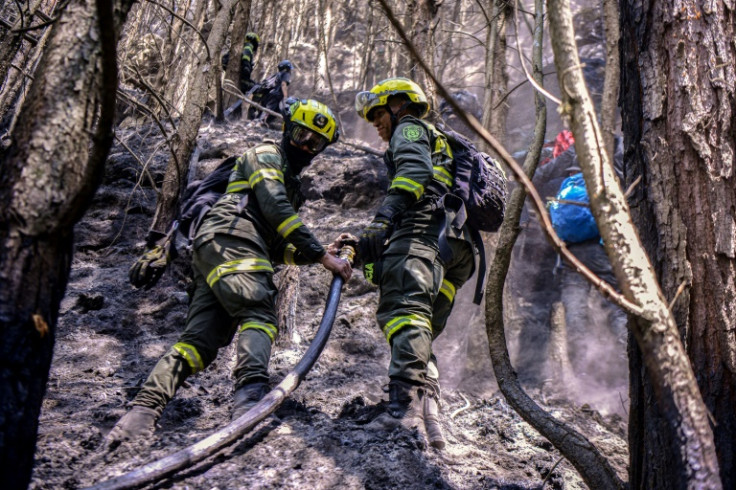
In the past week, amid what authorities have labeled as the hottest January in thirty years, Colombian firefighters are contending with extinguishing flames in forest fires linked to the 'El Niño' phenomenon, which have consumed at least 17,000 hectares of vegetation since November in the country—equivalent to more than 400,000 basketball courts.
President Gustavo Petro declared the entire Colombian territory in a "natural disaster" situation for a period of twelve months, and requested international collaboration "to address what could be a global emergency in the Amazon rainforest."
The well-known 'lungs of the planet', shared with Bolivia, Brazil, Ecuador, Guyana, Perú, Surinam y Venezuela, constitute "the most vulnerable point to climate change, not only for Colombia but for Latin America and, above all, for humanity," he said.
This year, a perfect storm in Colombia's climate involves the atypical El Niño, exacerbation of the climate crisis, and the dry season, explained by Tatiana Cespedes, a Greenpeace representative.
"The El Niño phenomenon is more intense, exacerbating, and more frequent due to climate change, and in the Ecuadorian region, coinciding with the dry season, it makes us more prone to water shortages, wildfires, and impacts on agriculture," stated the specialist.
She detailed that "there are still many fires in Venezuela, Ecuador, and currently, there are 37 fires in Colombia, while in the United States, the impact of El Niño is seen with frozen storms generating almost apocalyptic scenes in New York or Chicago."
Colombia Wildfires Economic Consequences

The Greenpeace representative highlighted significant biodiversity loss, especially in Ecuador, Colombia, and Venezuela. "The páramos, a crucial ecosystem found only in these three countries, are being burned. They are a water factory with a unique species, the frailejones, which condense water from the clouds at an altitude of over 3,000 meters."
Meanwhile, the most immediate cost that communities will have to face is "migration due to the climate crisis," according to Cespedes. "By 2030, it is estimated that 9 million Colombian inhabitants would be affected by environmental displacement. It's a significant number compared to the total population of 51 million," she added.
"There is improvisation regarding the extreme phenomena we are witnessing. It is necessary to have a sustained plan over time in response to the climate crisis and rapid responses to these phenomena," Cespedes emphasized.
The losses in the region from the fires since November in Colombia already exceed 122,000 million Colombian pesos, 31 million United States dollars, as warned by the Colombian Federation of Ranchers (Fedegán), a figure that may lead to increases in food prices.
According to a report published in Schroder Investment Management, "in the end of a strong El Niño, the S&P GSCI agriculture and livestock indeed might be around 40% higher from current levels around the turn of the year, while a very strong El Niño could lift prices by more than 50%".
Bogotá: Poor Air Quality and New Firespots
The country's capital, Bogotá continued under the effects of poor air conditions due to the wildfire hotspots in the surrounding mountains. These were declared 'controlled,' though not extinguished, and some remain active, such as in the nearby city of Sopó, located about 40 kilometers away.
Colombian journalist Efraín Arce, who needed to resume using face masks as those used during the Covid pandemic, was working this Tuesday from Sopó. He told The Latin Times that more than a hundred neighbors helped extinguish the hotspots, which kept reactivating due to the wind.
"They came out with picks, machetes, shovels, and hoes to assist the few firefighters. The technology is minimal, and they have few resources, so community collaboration becomes very important," he said. In a video he shared, Sopó neighbors recorded one of the most terrifying moments when the fire spread among the hills.
© 2024 Latin Times. All rights reserved. Do not reproduce without permission.







